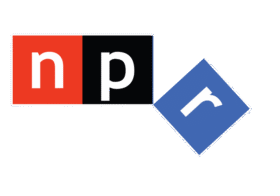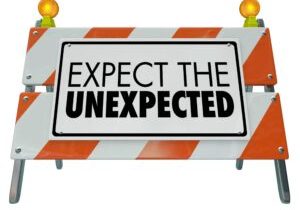
Readers of JacoBLOG are all too aware I’ve been closely following the recent decision by Congress to vote for President Trump’s recission bill, essentially defunding public radio. The term is “clawing back” the money, because in fact, the funds had already been allocated. And because the new fiscal term starts in October, the wheels are now turning with both speed and sadness as it relates to public radio and television’s respective futures.
The week ended with an announcement that the Corporation for Public Broadcasting—public media’s funding arm—is now going to shut down on September 30. With the exception of a few executives who are staying on to sort out outstanding issues, the entire staff—about 100 people strong—have been given their termination notices. And just like that, CPB—an organization created by Congress in 1967—is suddenly no more.
Jacobs Media has friends and colleagues at CPB, as we have for years. In fact, our initial foray into public radio was via a CPB grant called the “Territories Project,” a study of the media environment and how it might be impacted by the wave of digital. This was back in the late 1990s so it gives you an idea of the prescience of CPB’s leadership way back when. Aside from distributing funds to hundreds of public broadcasting stations, this is the valuable type of research and vision CPB funded.
This attack on public radio has been amplified over the past few months, sending unprecedented shock waves throughout the system, from the biggest markets to small rural communities. The rule of thumb is that major market public radio stations may be dinged and dented by this dire set of fiscal circumstances, but most will get through this economic challenge and live to fight well more than another day. It is the community stations and operators in second and third tier markets that will be most impacted. It is estimated as many as 80 stations will go out of business as result of this defunding.
The map below shows public stations (TV and radio) and their reliance on federal funding by state. The darker the shade, the more a state’s stations rely on these dollars:
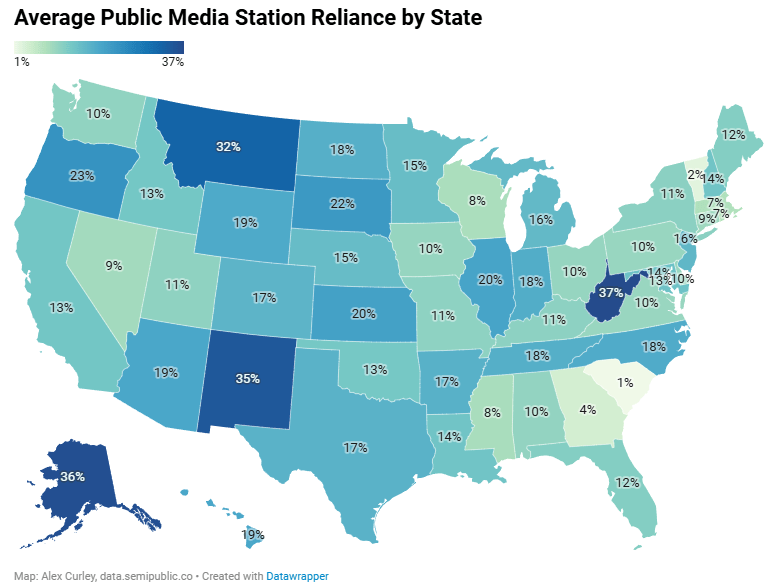
To take a deeper dive and to truly make sure this exercise hits home, use this link to determine the percentage of any public radio station funding that came from CPB. Obviously, the higher it goes, the more challenged a station will be to make up for lost federal dollars. None of this means necessarily that broadcast outlets most dependent on government funds in order to operate are on the “endangered public radio stations list,” but that’s probably not a bad bet.
Here’s the opening of the heartfelt and brutally honest letter CPB head Pat Harrison sent to the organization’s member stations after the recission vote:
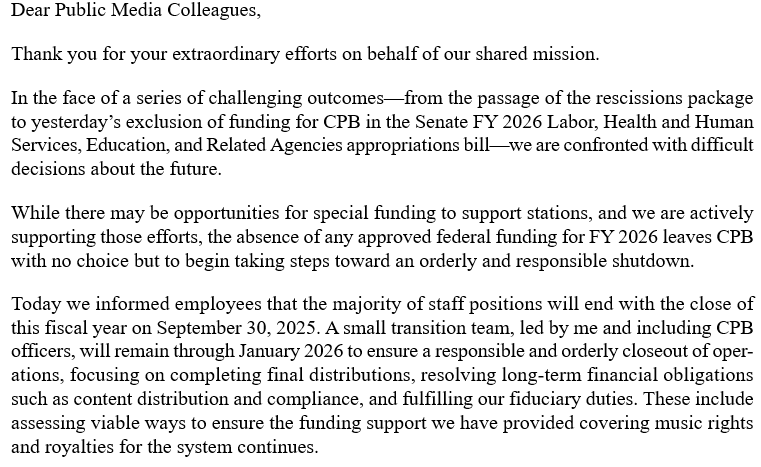
While many in the public radio community were deeply saddened by Congress’ decision, many did not expect it would result in the demise of a solid institution like CPB, just days after the vote took place. Here’s how Harrison closed her missive to CPB stations across the 50 states:
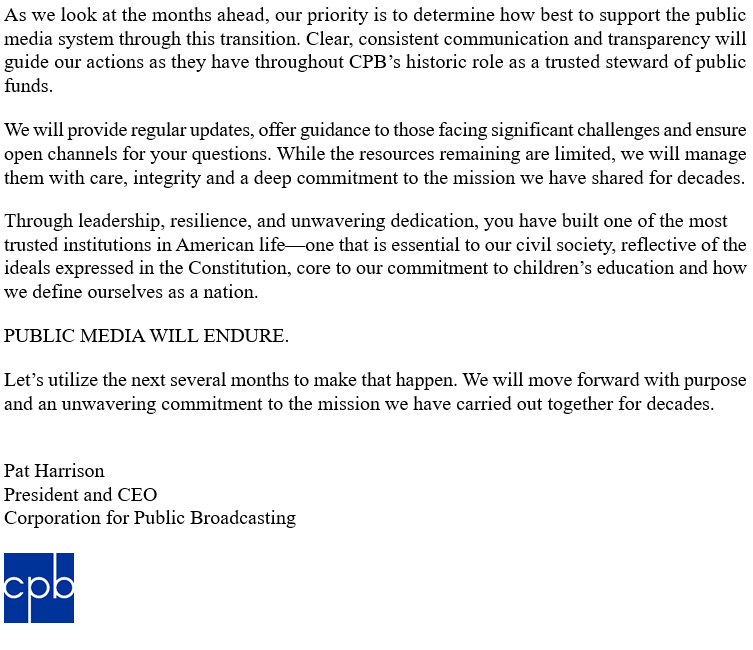
Why does this matter—especially to radio broadcasters who are diametrically opposed to public funding of broadcast radio and television stations? As a company these past 4+ decades, I would venture to say Jacobs Media has a truly unique vantage point for the radio industry. We’re one of the few companies of any kind with a strong footprint in both content and revenue generation in commercial, public, and Christian radio. Additionally, our research in all three sectors always suggests they have more in common with each other than the traits that separate them. This perspective provides us a rare holistic view of broadcast radio in America.
I have heard and read from many people—in and out of radio—who believe public radio just received its comeuppance—that they deserve to be penalized for being too liberal and woke. Others simply resent the idea of government funding of certain radio stations.
I would suggest to you that this punishment meted out by the government affects all broadcast radio.
It is not dissimilar to that same realization when AM radio came under attack a couple years back. As part of a joint day of sessions in D.C. hosted by the NAB and NASBA—the association that leads the network of state broadcaster groups—I hosted a panel comprised of leaders of black, religious, farm, and Hispanic radio—groups that have little in common culturally or politically. But their Venn diagram common thread was the threat of losing their dashboard presence by overzealous automakers trying to save a few bucks by eliminating the AM band in their new lines of cars and trucks.

L-R: Patty Ruiz (Bustos Media), Tom Brand (National Association of Farm Broadcasting), Noelle Garnier (National Religious Broadcasters), James Winston (National Association of Black Owned Broadcasters), me
The same dynamics are in play here as public radio stations fight for their lives. When bad things happen to any form of broadcast radio, it is a drain on the entire medium. The weakening of public radio, the loss of smaller, community stations, and a diminished NPR isn’t good for the platform—or for radio, capital “R.”
The dismantling of CPB, coinciding with the end of government funding for public media in the U.S. may be the biggest radio story this year. However you come down on federal dollars for public radio, the net:net of this activity is not good for broadcast radio in general. Even if you have some glee over hundreds of these stations facing the music, it raises all sorts of questions about terrestrial radio’s prospects moving forward. There are many unanswered questions, specifically revolving around how public radio networks such as NPR will fare in an environment with much less funds and fewer outlets. Without a doubt, broadcast radio just got weaker.
Even if you do not perceive a broadcast platform that attracted tens of millions of listeners every week as a loss, imagine what the diminishment of public radio might mean to the overall numbers broadcasters love to ballyhoo about the size, scope, and reach of AM/FM radio. An estimated 30 million Americans tune in public radio each week in the States. And while many stations will endure, albeit with modifications to their business models, there will still be public radio in America. The question revolves around those who lose this access in communities where news and information is not plentiful to begin with.
For all radio broadcasters, this is not a “business as usual” set of circumstances. If anything, operators outside the public radio ecosystem should give a great deal of thought to how they’re serving their audiences and how that content and approach resonate (or not) with the sentiments at 1600 Pennsylvania Avenue.
Prescient observers of the landscape have seen much of this coming for some time now, memorialized to a great degree in the voluminous “Project 2025” document which made the rounds last year. That extensive plan recommended the defunding of CPB, and a mere seven months into 2025, it has happened.
But the symptoms that accompany the demise of public radio are already manifesting themselves in other places and in other ways. Of course, Stephen Colbert‘s cancellation is a matter of record, and while the specific motivations for ending this late night institution are a matter of debate, the 60 Minutes capitulation by the same network is also fodder that supports the argument there’s more to these goings-on than simply dropping a TV show and its gregarious host. Nothing is happening by accident or by coincidence.
course, Stephen Colbert‘s cancellation is a matter of record, and while the specific motivations for ending this late night institution are a matter of debate, the 60 Minutes capitulation by the same network is also fodder that supports the argument there’s more to these goings-on than simply dropping a TV show and its gregarious host. Nothing is happening by accident or by coincidence.
To get a sense for the sequence of events, CBS announced the sunsetting of The Late Show along with Colbert on July 17. One week later, the $8 billion merger was approved by the F.C.C.
Closer to home, Charlamagne tha God is now going toe-to-toe with the president in a vicious back-and-forth tête-à-tête full of vitriol, accusations, and acrimony. Of course, it’s personal:
Charlamagne tha God breaks down dementia symptoms, then shows Trump displaying them. The evidence is clearer than his spray tan lines. pic.twitter.com/dlXUnk1pC9
— Republicans against Trump (@RpsAgainstTrump) August 3, 2025
Over on Truth Social, it’s been business as usual:
https://jacobsmedia.com/wp-admin/edit-comments.php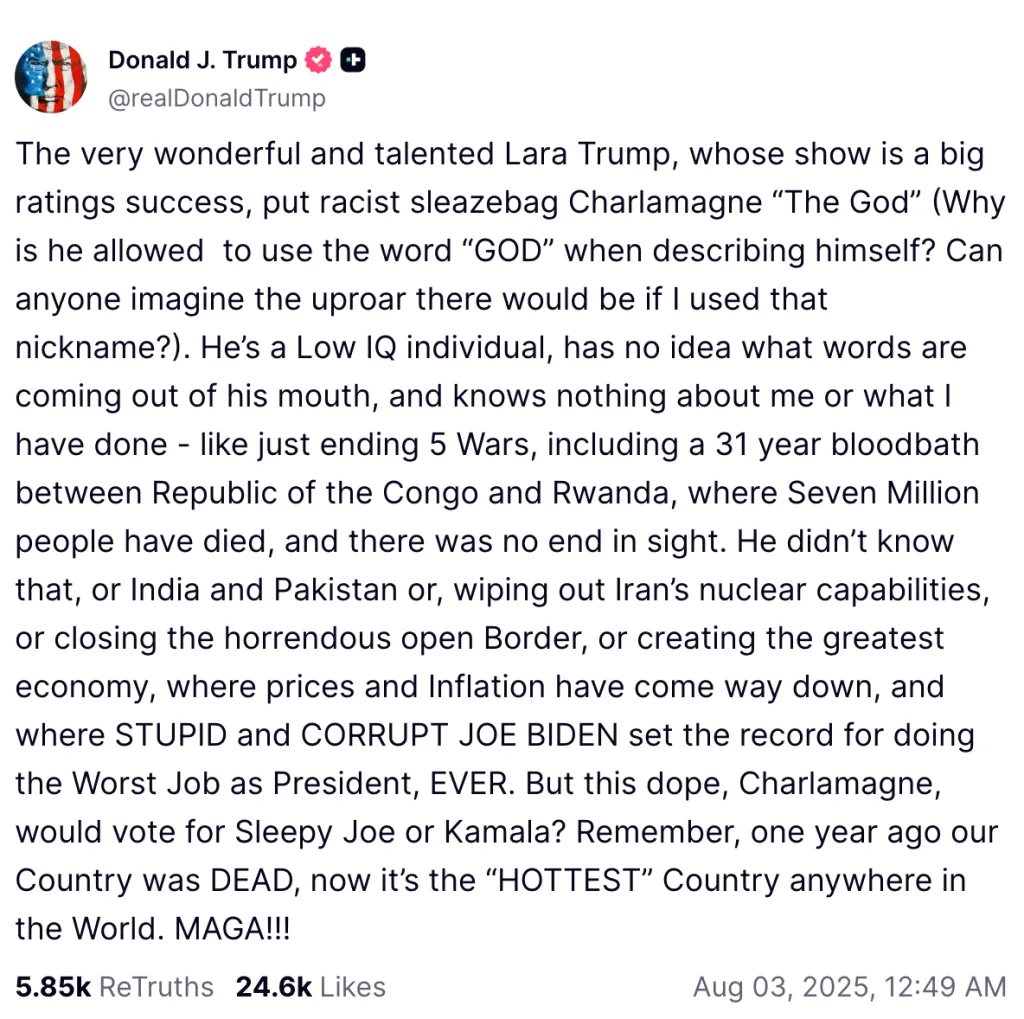 Of course, Charlamagne isn’t just another random radio personality. His Premiere Networks show, The Breakfast Club, is heard on approximately 100 radio stations every weekday morning—owned by America’s largest radio company, iHeartMedia.
Of course, Charlamagne isn’t just another random radio personality. His Premiere Networks show, The Breakfast Club, is heard on approximately 100 radio stations every weekday morning—owned by America’s largest radio company, iHeartMedia.
And that brings us to a conversation about the U.S. agency that regulates all broadcast stations, the F.C.C. Its new chairman, Brendan Carr has already spoken out early and often his vision—as well as his boss’. Here’s how he recently handled the murky topic of fairness:
Q: When you say you want fair coverage, does that mean coverage that’s more favorable to this president?
Carr: Look, something has to change. Again, it’s not just my perspective… If you’re going to run a broadcast media operation, the FCC and congress, frankly, have decided you… pic.twitter.com/i2oPcOqhnB
— Acyn (@Acyn) August 3, 2025
Of course, Carr offers a nuanced response about what he really would like to see and hear. So much so that late last month, a media freedom advocacy group, the Freedom of the Press Foundation, filed an ethics complaint against Carr, accusing him of having “engaged in egregious misconduct,” especially as it relates to comments ahead of the F.C.C.’s approval of the Paramount/Skydance merger—the CBS deal.
Ahead of the green light to approve the deal, Carr had been vocally threatening over the merger. You may recall Bill Owens, executive producer of 60 Minutes walked away from the show this past April. In July, Paramount settled with Trump in a well-publicized lawsuit for $16 million. This has truly been an interesting and troubling series of events to those who appreciate press freedom.
What’s coming next is unknown. In fact, the keyword for 2025 hasn’t been “tariffs”—it’s been “unpredictability.”
And the loggerheads many are feeling between the media and the Trump administration would appear to be wrapped up around the First Amendment—the ability to air what we want (this side of the “7 Dirty Words”) on our air, whether our shows are hosted by Mark Levin, Dave Ramsey, or Charlamagne tha God.
In a democracy, the people are supposed to decide whether you’re any good or you suck, and whether they’ll patronize or boycott your advertisers.
That’s how the game has typically been played, with notable exceptions earlier in this century, one of which was the crackdown over the “Wardrobe Malfunction” at the 2004 Superbowl Halftime Show. Somehow, an incident on television ended up having a most chilling effect on radio.
Still a broadcast syndication superstar during this period, Howard Stern regularly went to the airwaves during that heated time to do battle with then-F.C.C. chair, Michael Powell. I believe the blurry lines of indecency were a big motivator for Howard to opt for the safe confines of an unregulated satellite radio system.
This controversy had reverberations on local talent around the country. I recall sitting in on conference calls with company lawyers trying to counsel nervous talent, wary PDs, and freaked-out GMs. This was an especially uncomfortable time when the “decency goal posts” kept moving or were only vaguely defined. At one point, the announced fine for each F.C.C. violation was $27,000 a pop. And there was at least one radio company that made it clear that if there was a fine levied, it was the personality’s responsibility to write the check.
All these years later, it is still a concern for talent. Our AQ studies have asked a question about whether radio personalities running afoul of someone because of something they utter over the airwaves:
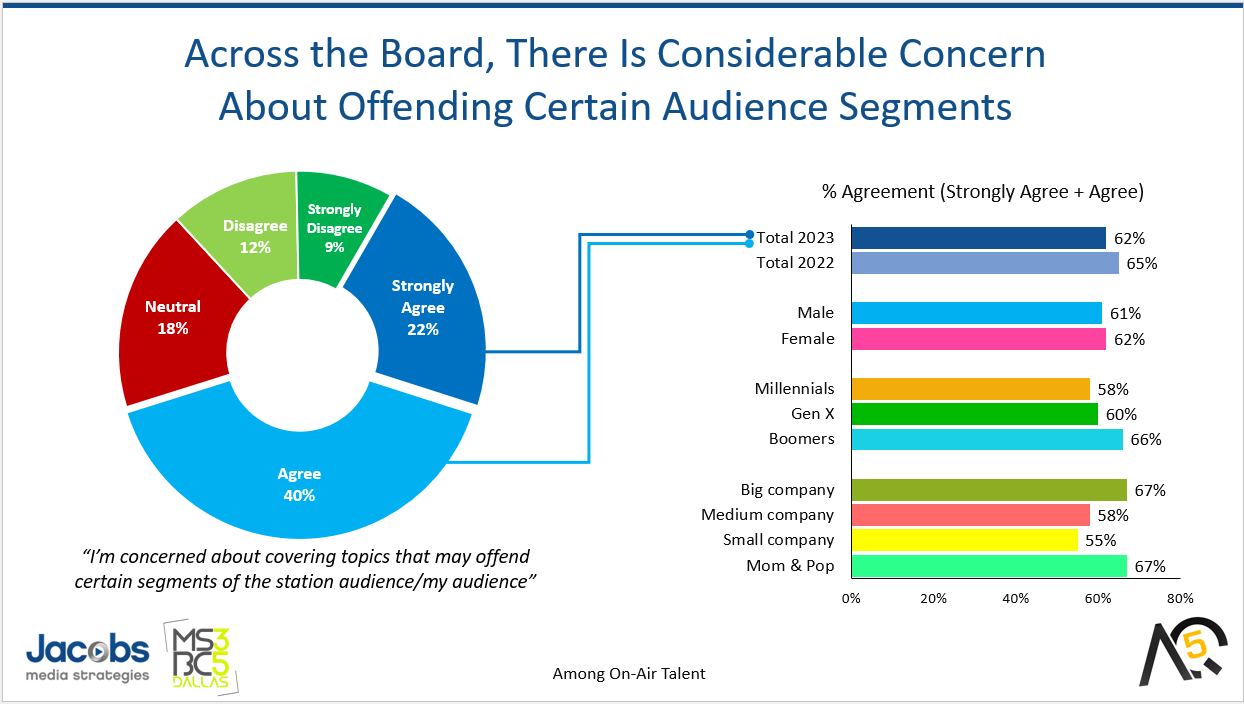
Oddly enough, Stern may still be in the thick of things. As I was wrapping up this post, I saw a story in Inside Radio. According to the U.S. Sun, he may end his 20-year run with SiriusXM this fall when his current contract expires.
 While compensation is said to be an issue—Howard makes a reported $100 million a year now—the scuttlebutt is that SXM can’t afford that lofty salary level in today’s fragmented media economy.
While compensation is said to be an issue—Howard makes a reported $100 million a year now—the scuttlebutt is that SXM can’t afford that lofty salary level in today’s fragmented media economy.
But the Sun story also suggests Stern’s unabashed trashing of Trump, especially during the past year may be a factor in all this, too. As an “insider” told the Sun, “If Sirius isn’t going to give Stern a good offer, I don’t think it would have anything to do with his ratings. It’s more likely everything to do with the political climate.”
While today’s tension between government regulators and media companies is markedly different, the thought of returning to that tenuous environment is tenuous and perilous. Yet, talk to anyone in public radio and they’d be just fine dealing with the Justin Timberlake / Janet Jackson brouhaha.
And in the American broadcasting ecosphere, the sands feel like they’re shifting. Not that long ago, the big boulders for radio broadcasters were AM in cars and more deregulation. Right now today, it seems like we’re teetering on freedom of speech issues and their lofty ramifications. It’s coming down to that good old First Amendment—or 1A—concerns.
Advocacy groups like the NAB may be looking at a different palette of issues having an outsized impact not just on media organizations but the entertainment and information millions of Americans have come to expect. We are already witnessing how various companies, their CEOs, and their boards are—or are not—standing up to the immense pressure.
Will we wilt, buckle under, or cave? Or will we step up, be emboldened, and fight the good fight?
Hopefully, we’ll all be able to stay tuned.
Originally published by Jacobs Media

